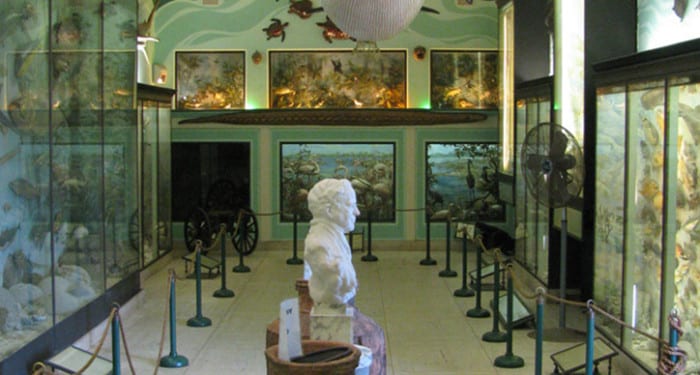The Suffolk County Vanderbilt Museum has received a grant of $135,000 from The Robert D. L. Gardiner Foundation to support the restoration of the museum’s extensive marine collection, the largest privately assembled collection of sea specimens from the pre-atomic era.
William Vanderbilt (1878-1944) created his Marine Museum, which he called The Hall of Fishes, in 1922. He stocked it with marine specimens collected during voyages to the Galapagos Islands and opened it to the public for a few hours a week. He added to the collection after his circumnavigations of the globe in 1928-29 and 1930-31.
Jennifer Attonito, executive director of the foundation, said, “The Vanderbilt Museum is a Long Island gem and a major anchor of local history. We are proud to help preserve this valuable collection to benefit museum visitors and to help raise awareness of Long Island’s heritage.”
The Gardiner Foundation, established in 1987 in Hampton Bays, supports the study of Long Island history, with an emphasis on Suffolk County. The foundation was inspired by Robert David Lion Gardiner’s personal passion for New York history.
Stephanie Gress, the Vanderbilt’s director of curatorial affairs, said, “The Gardiner Foundation grant will help us to restore and preserve many rare specimens in our Marine Museum that have long needed critical attention. Our marine collection is the foundation for several key Vanderbilt education programs that serve Long Island schools.”
The Vanderbilt marine collection of 13,190 specimens is housed in the Marine Museum, Habitat and Memorial Wing. Of these, she said, 919 are invertebrates in fluid (displayed in “lots” — from two to many in a single display container); 719 dry fish specimens; 1,746 wet fish specimens in lots and 9,806 dry marine invertebrates (shells and corals). Dry specimens are exhibited on the first floor of the Marine Museum, wet specimens on the second floor.
The two largest marine specimens are a 32-foot whale shark — caught in 1935 and restored in 2008 with a federal Save America’s Treasures grant — and an imposing manta ray, caught in 1916 and restored many years ago, with a 16.5-foot wingspan. William K. Vanderbilt II called it the “Sea Devil.”
Gress said cartilaginous fish, such as sharks and rays, which have spines of cartilage instead of bone, are the most difficult to preserve. Another problem is the age of the collection — many of Vanderbilt’s earliest specimens are nearly 100 years old. When preservation fluid (ethanol and distilled water) in specimen containers degrades the wax seals, comes in contact with air and evaporates, specimens can decompose, she said.
The Suffolk County Vanderbilt Museum is located at 180 Little Neck Rd., Centerport. For more information, call 631-854-5579 or visit www.vanderbiltmuseum.org.





